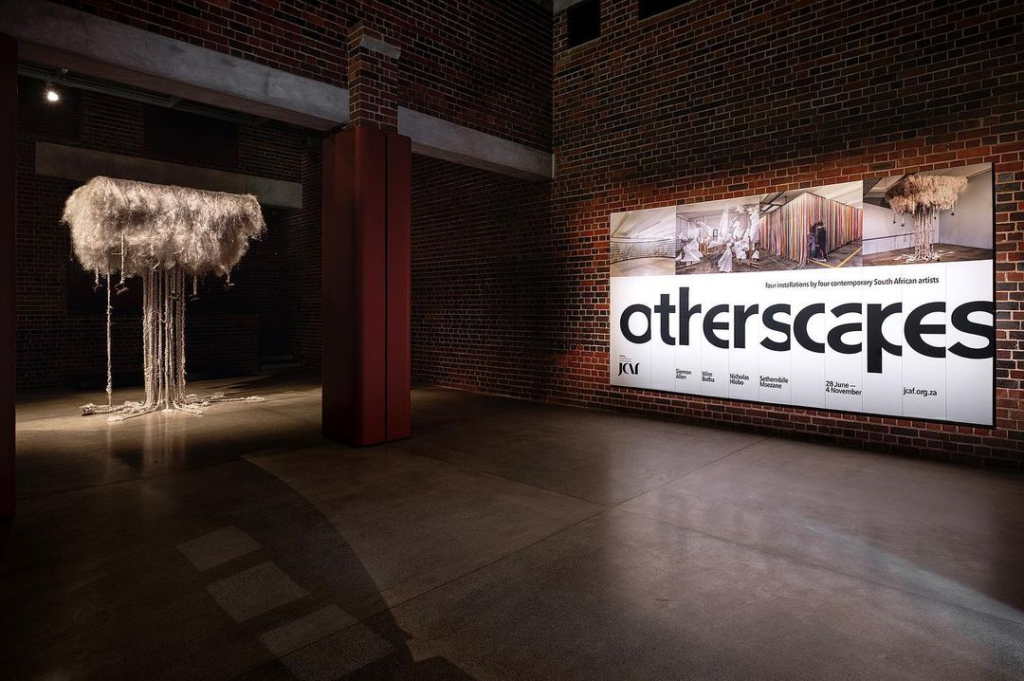The Joburg Contemporary Art Foundation currently displays four installations by four amazing South African artists in an exhibition titled: Otherscapes. The exhibition surveys contemporary South Africa through four large-scale installations while unveiling diverse ‘scapes’ portraying the nation’s essence. Each installation represents unique perspectives on people, nation, identity, and space. The four artists presenting their installations are Siemon Allen, Wim Botha, Nicholas Hlobo and Sethembile Msezane. Let us take a deeper look into the exhibition and artists.

The Four interactive installations are like specters emerging from the landscape. Possessing a unique approach, the installations invite the viewers to engage, walk around and explore their worlds from different perspectives. The artists confront themes of colonialism and politics, memory and spirituality, comparing utopia, nature and reality.
Following the end of the apartheid era to a democratic regime, South Africa developed a rainbow idea of what their country would look like. Three decades later, South Africans are struggling to grapple with what democracy should look like. Sethembile Msezane’s work, questions about memory’s permanence arise through materials like hair, water, and fire. Her exploration delves into the individual and collective impact. Msezane’s perspective reflects South Africa’s state, which was deeply shaped by apartheid and colonialism.

Win Botha’s installation, on the other hand, examines the debate between the real and the unreal. Wim Botha’s work varies from delicate to raw, showcasing traditional techniques in monumental installations. He employs diverse and unconventional media, like carved books and polystyrene, to explore history, religion, status, and power themes. Referencing historical imagery, he addresses contemporary issues.
Hlobo explores our unknown future symbolically in the form of a labyrinth. He interrogates African traditions and rituals, exploring boundaries between femininity and masculinity. ‘Ndize’ directly refers to the hide-and-seek game as a labyrinth mirroring life’s non-linear experience. The labyrinth embodies freedom, evoking childhood liberty, fantasy, and imagination related to play.

Lastly, Siemon Allen analyzes major political and economic events as a South African living abroad since 1997. With an archival impulse, Siemon Allen collects historical artifacts, newspapers, books, stamps, vinyl records, and audio recordings. ‘Stamps V’ comprises 100 years of South African stamps, highlighting how strategic national symbols foster a sense of belonging and pride while becoming potent tools in political discourse and manipulation.
The exhibition sure promises to be as visually stimulating as it is mentally. Check out this interactive exhibition at the Joburg Contemporary Art Foundation website to learn more about South African history and the future.


